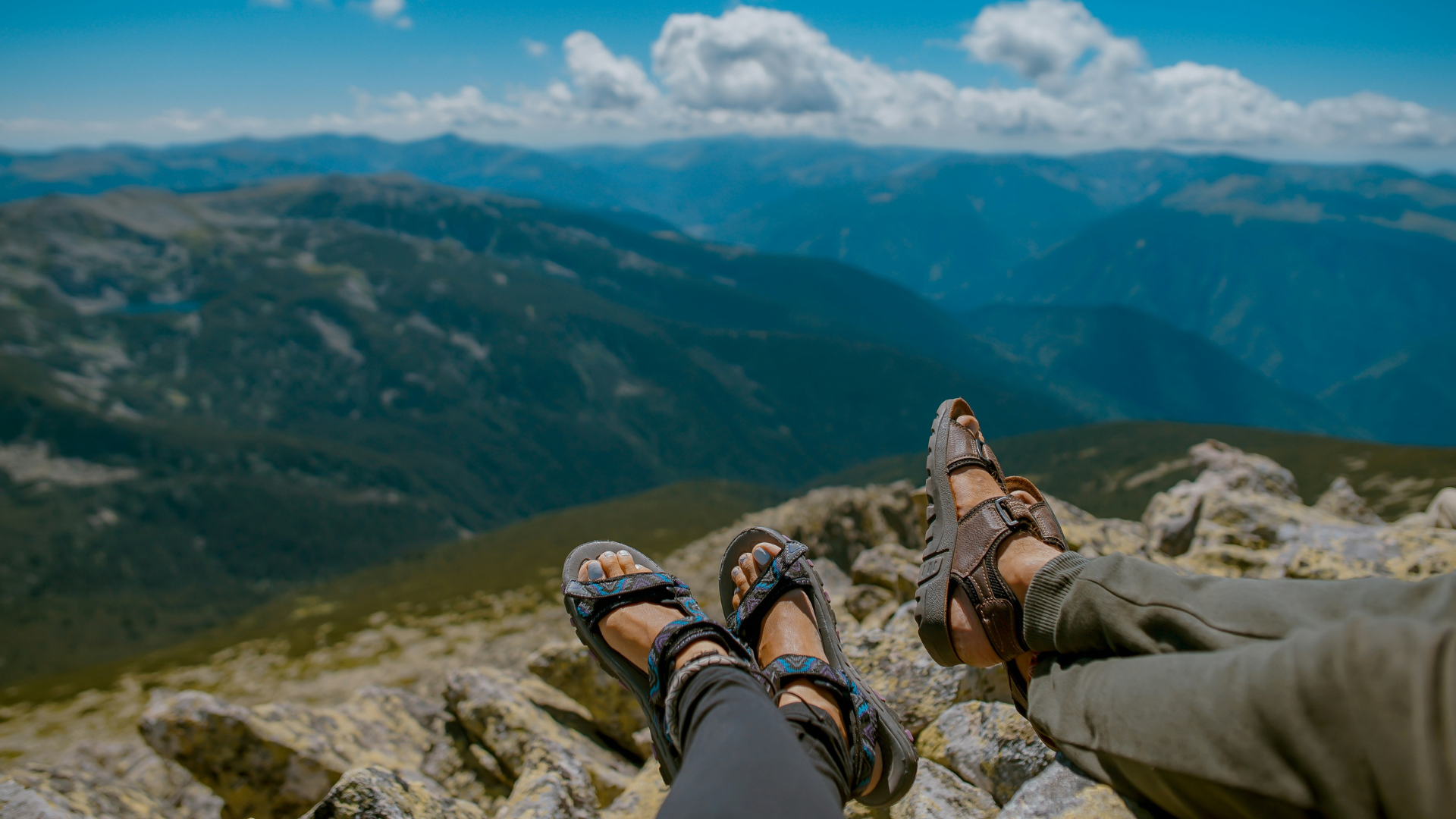
It seems that paralleled by the rise in popularity of walking and camping, has come a real change in summer footwear fashion. This year, high streets and catwalks have been peppered with the chunky walking sandal – taking pride of place over the unpractical espadrille and minimalist flipflop.
No longer a fashion faux-pas, it's now loved both in the urban jungle and out on the trails – no doubt for its comfort, support and downright ease of use. And while we’re more concerned about the improved technical features that have come with this rise in popularity, we can’t help but cheer on the increase of choice when it comes to color, material and style.
Hiking sandals may not be the cheapest of investments, but recent enhancements in design and function have made them a top choice for all manner of terrains. The next gen of the best hiking sandals have got grippy soles, arch support and soft, forgiving uppers, so when it’s too hot for hefty footwear, why don't you try out a pair.
If you’re yet to invest for the first time, or are considering an upgrade, read on for five reasons you should pick up a pair of hiking sandals before your next outdoor exploit:
What are hiking sandals?
- They have solid soles but a minimal upper, allowing air to circulate around your feet
- Uppers are made from lightweight, quick-drying materials
- They offer traction and durability, like shoes, but are lighter in weight
- They're quick and easy to get on and off, with straps secured by adjustable velcro, bungee cords or slider buckles
- More heavy-duty, closed-toe versions are available, sometimes known as 'shandals'
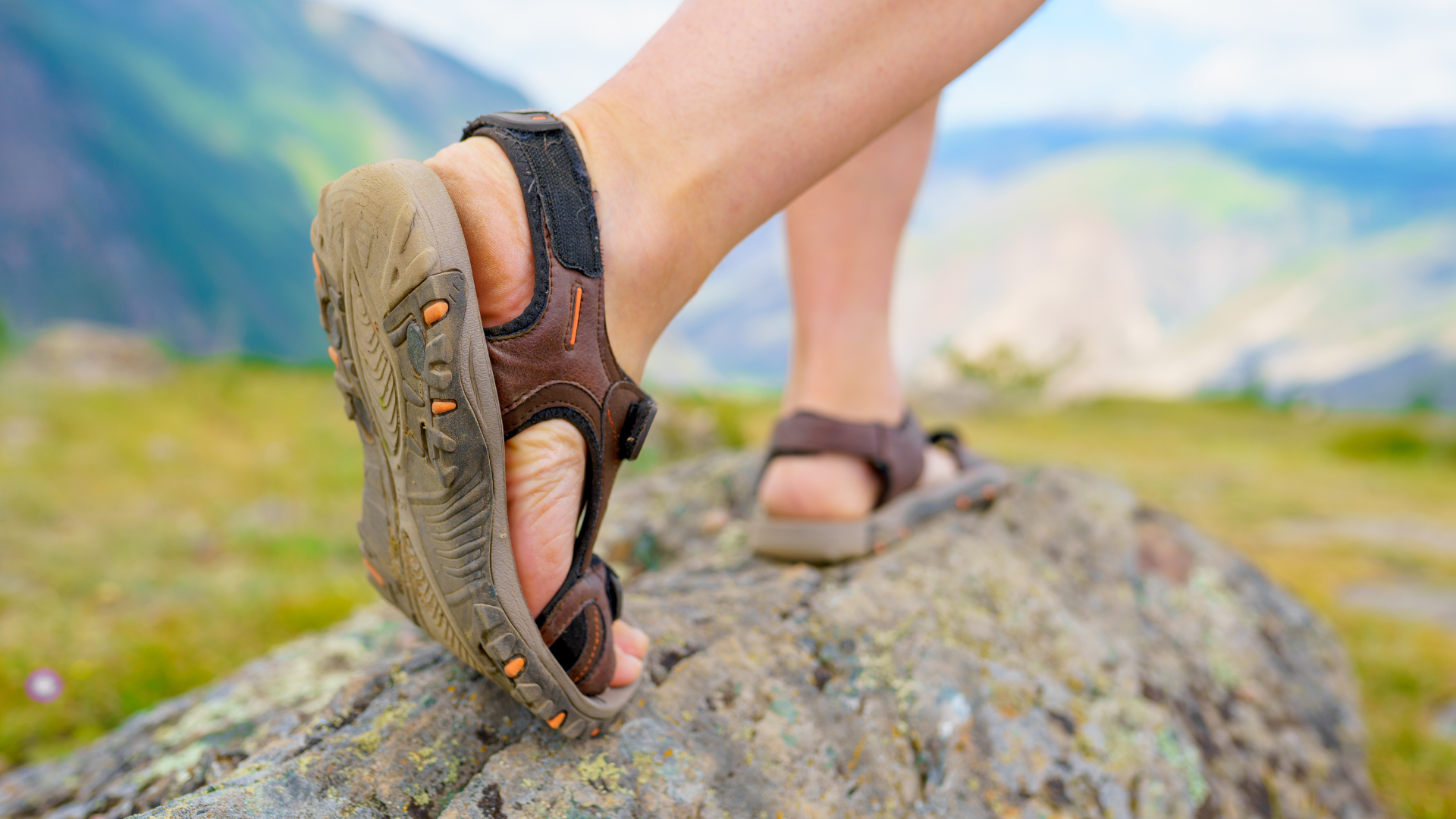
A mix between a walking shoe and a summer sandal, the hiking sandal is a footwear phenomenon that’s been gaining popularity in the past few decades. Admittedly the concept has been around for thousands of years – cavemen sported the first models made from bark and straw, and Romans did well at covering new ground in leather models. However, with advancements in manufacturers’ technology, we’re seeing more and more people take to the trails in them.
They have durable soles with minimal uppers that still offer the support you’ll need on challenging terrains. They allow air to your feet and are quick drying, and are usually secured with adjustable straps and fastenings. They also come in a huge range of materials – from leather to minimal synthetic fabric – meaning that you can pick and choose tailored to your adventure.
There are many designs available, ranging from extra sturdy and supportive for more tricky terrain to lightweight and comfortable for longer, gentler walks.
For some, a lifestyle choice, but we reckon they’re a vital solution for hiking in warm weather.
1. Say goodbye to hot feet
- Minimal uppers mean air can circulate your feet keeping them cool
- Breathable fabrics allow air to pass through the straps too
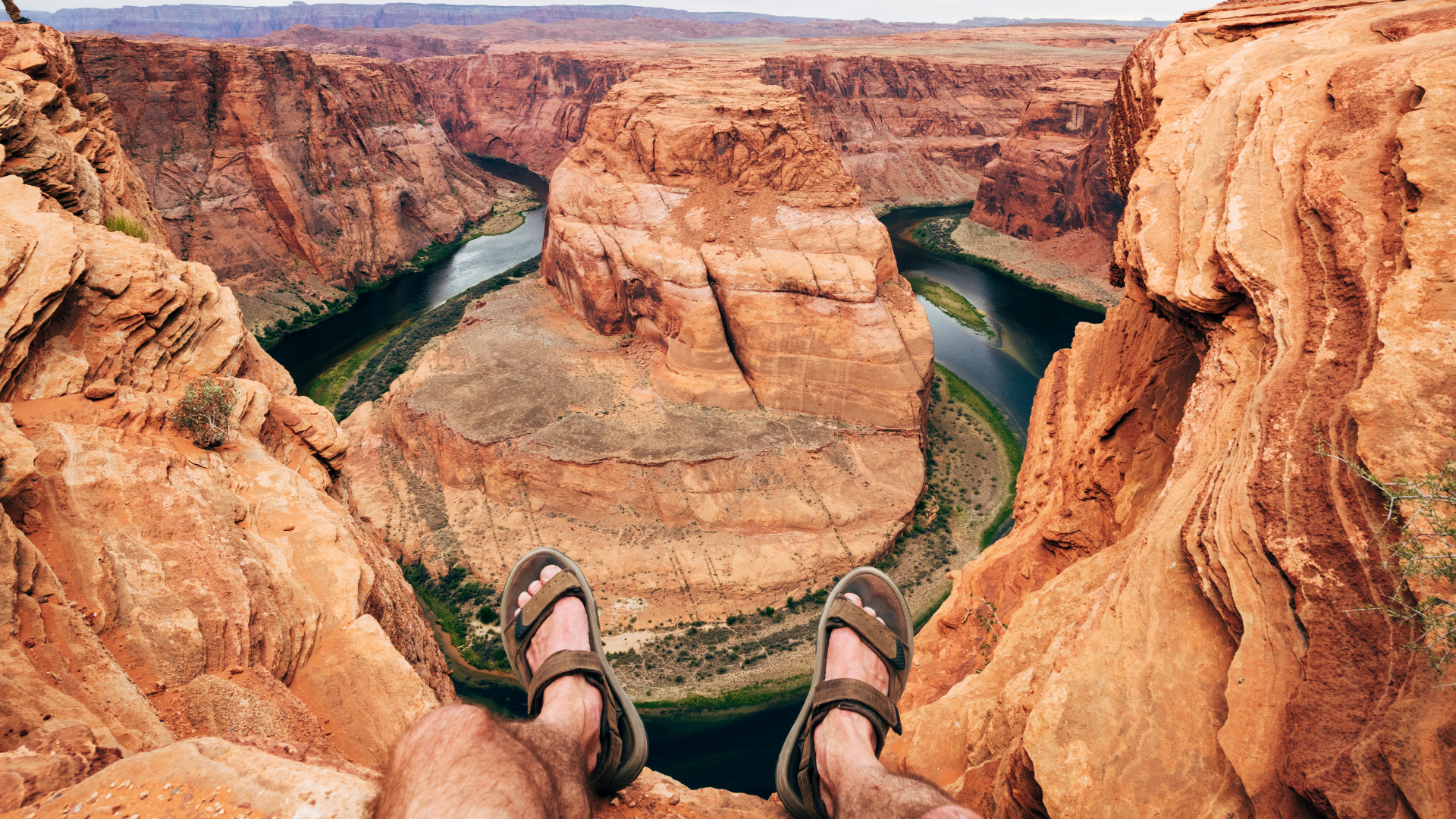
We’ve all been there: the day we’ve donned boots and socks, only for the sun to emerge from behind the clouds, defying all weather predictions, and send the temperature soaring. There’s the initial discomfort, then the fear – when we peel off a sock, the whole epidermis will come off with it?
Ultimately foot health is key to any outdoor adventure and we want to keep our feet in top condition. Hiking sandals are the best solution in hot weather. Not only do they have minimal coverings; good designs use breathable fabrics, allowing air to pass through the straps.
These straps – often made from webbing or nylon – are tough but lightweight, meaning they'll dry out quickly, and footbeds are often designed to wick away sweat.
If you need maximum support for tricky terrain, there are styles available with thick rubber soles and deep lugs. Sometimes called a ‘shandal’ – a cross between a shoe and a sandal – they can come with toe coverings to protect against stubs and bangs.
As you're getting used to your new hiking sandals, it’s a good idea to pack a pair of lightweight socks in your bag to help if blisters start to form.
2. Splash around till your heart’s content
- Have the freedom to walk through water
- Maintain grip on slippery rock
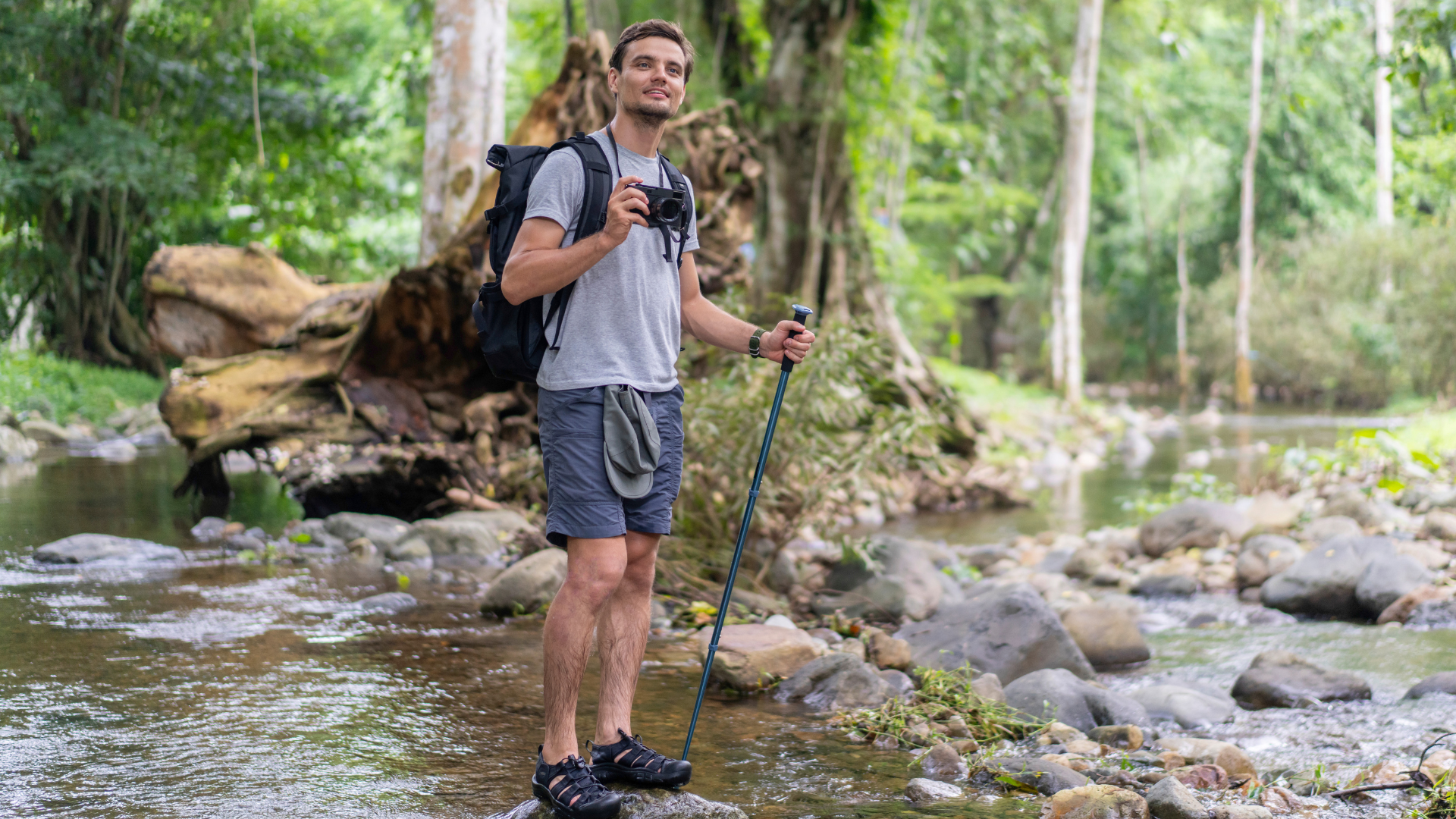
It’s not just sweat that seeps into our socks and shoes irritating the skin and causing blisters. Have you been let down before by waterproof shoes? Or been 'that person', holding up the group to fashion plastic bags into a waterproof liner for your boots before stomping through a ford?
There’s nothing like the freedom of splashing through streams while your pals edge precariously across logs and stretch nervously over stepping stones. Hiking sandals are the way to do it – offering the support of a shoe while promising to dry out quickly when you're back on dry land.
If you know you’re going to encounter water or humid conditions on your trek, look out for extra-grippy, textured soles which will keep you steady on slick surfaces.
Wide straps will give you a locked-in feel, just make sure they’re the right style for the shape of your feet. They should offer support, but not feel overly tight.
Sandals will see you comfortably through rafting expeditions, canyoning and coasteering trips, and the straps mean they won’t float downstream when you’re wild swimming. Meanwhile, popular slip on and off styles mean you can cast them aside when needed.
If your trip is 100% water-based, check out our advice on water shoes.
3. Get that true feeling of freedom
- Feel lighter as you walk
- Minimal material means a lighter load in your bag
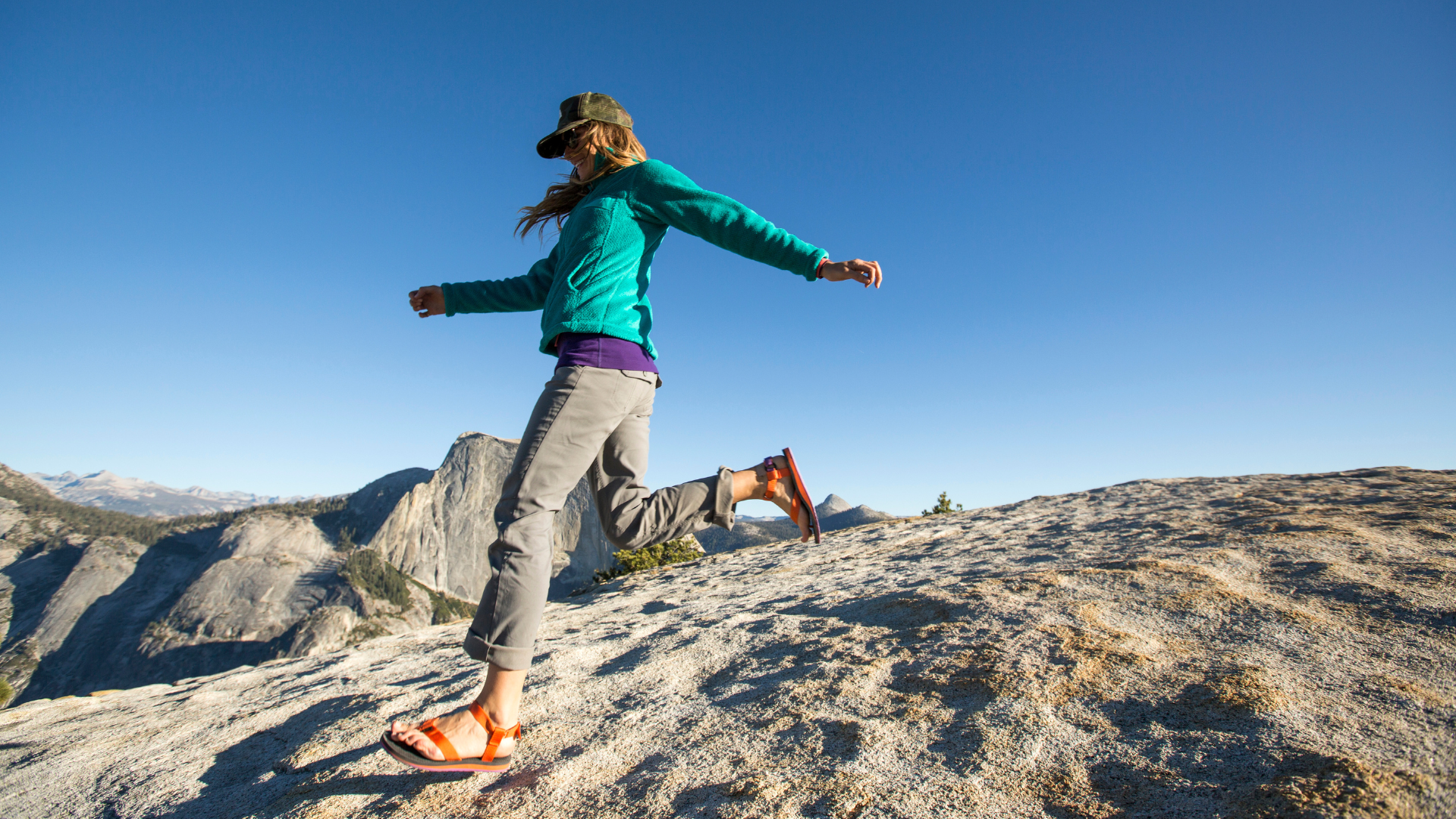
It’s a personal choice, whether you prefer to be geared up to the max when you go for a hike, or take a more minimalist approach; hiking sandals can definitely help you feel more connected to the earth.
You'll enjoy the comfort of having greater flexibility in your foot and opportunity for more movement. And for hikers with foot issues – extra-wide feet, sore toes from shoe rub – this is a chance to potentially hike pain free.
While advancements in technology mean hiking shoes and hiking boots weigh a fraction of what they did even last decade, they still take up space in your bag.
A pair of hiking sandals will squeeze into whatever little space you have left. And it’s not just at baggage weigh-in that you’ll notice the difference.
As long as you're not planning to scale a technical scramble or navigate sharp scree, hiking and sandals can be a great choice for long-distance walks, where shoes can feel cumbersome at the end – find out why one of our writers recently changed her mind about hiking sandals.
Of course, the more money you spend on a pair, the more comfort and longevity they’ll give – and they’ll take a little getting used to if you’ve not owned a pair before. But when you do, you’ll be powering up inclines and nimbly hopping over obstacles while feeling sure-footed all the way.
4. They’re so versatile
- Take them on the trails or wear them to the pool
- From sand to rocks, they'll carry you across different terrains

If you’re on a multi-activity adventure, hiking sandals can really come into their own. Walking one day, coasteering the next, a trip to a local market – you’ll see see serious returns on your investment.
They're perfect for multi-day hikes too, where they can give your feet a break from shoes or boots on the lighter-walking days.
Hiking sandals can double up as your evening shoe, and they’re great to wear for a dip in the sea or down to the pool on holiday.
There are even styles you’ll feel comfortable running in – although this may take some getting used to.
In tropical climates they’re a win, and there’s always the option of slipping on a pair of socks underneath to keep your toes cozy when around the campfire at night.
The key is to shop around and find a pair with cushioning and straps that suit your feet – soon you won’t want to go anywhere without them.
5. They look good now
- There are lots of designs to pick and choose from to suit your style
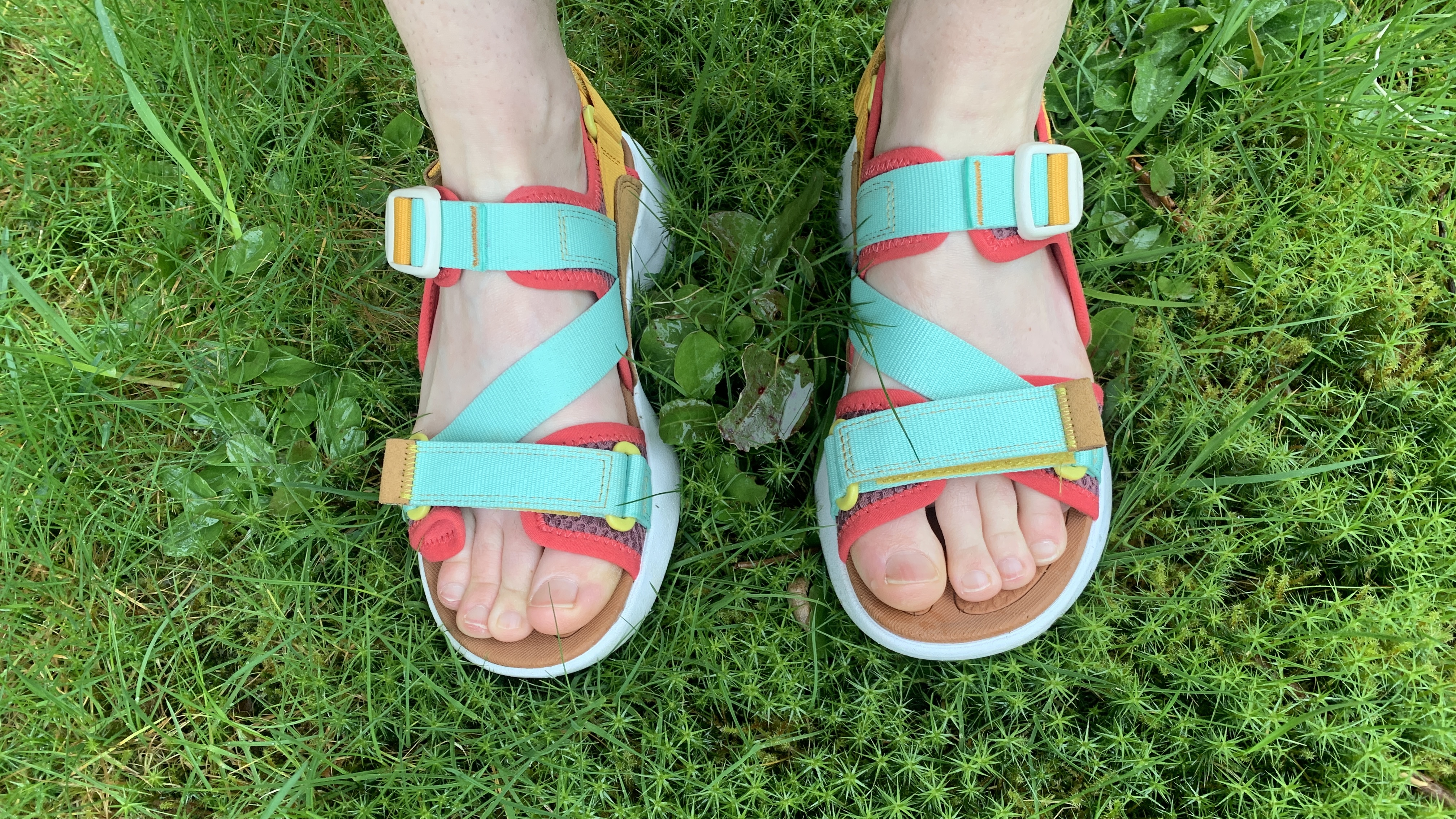
Much like how we can now, contrary to our parents’ advice in the 80s, go adventuring in sandals, we can also go against our parents’ choice of color and style too (sensible navy or black).
As we run through the technical feature of a shoe and whether it’ll stand up to the challenges of our next outdoor trip, we’re also deciding if we like the color, fabric and shape.
Whether we prefer the durable, classic look of leather of the modern statement brightly colored nylon, there’s so much choice you can give fellow hikers clues about your style through your sandals.
We loved the bright colors of the Elle Backstrap Sandals; while Teva offers color variations in lots of their styles.
If you like to step out with a cleaner conscience, some brands such as The North Face offer cushioned soles made from recycled plastic.
Just don’t forget to dollop sun cream on the top of each foot before you step out so you’re not left with curious tan lines.







